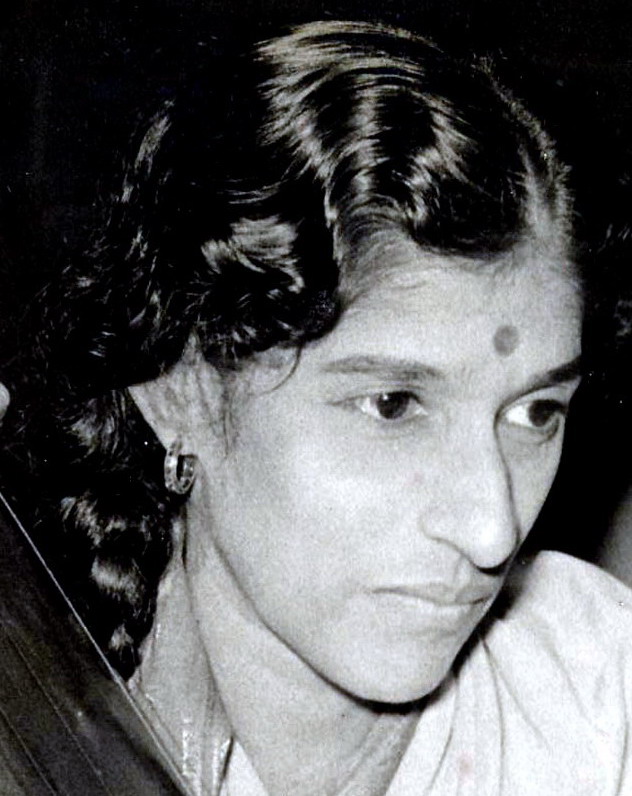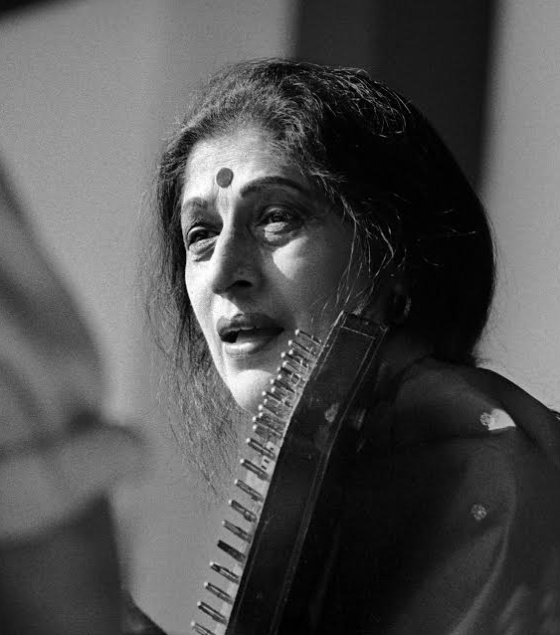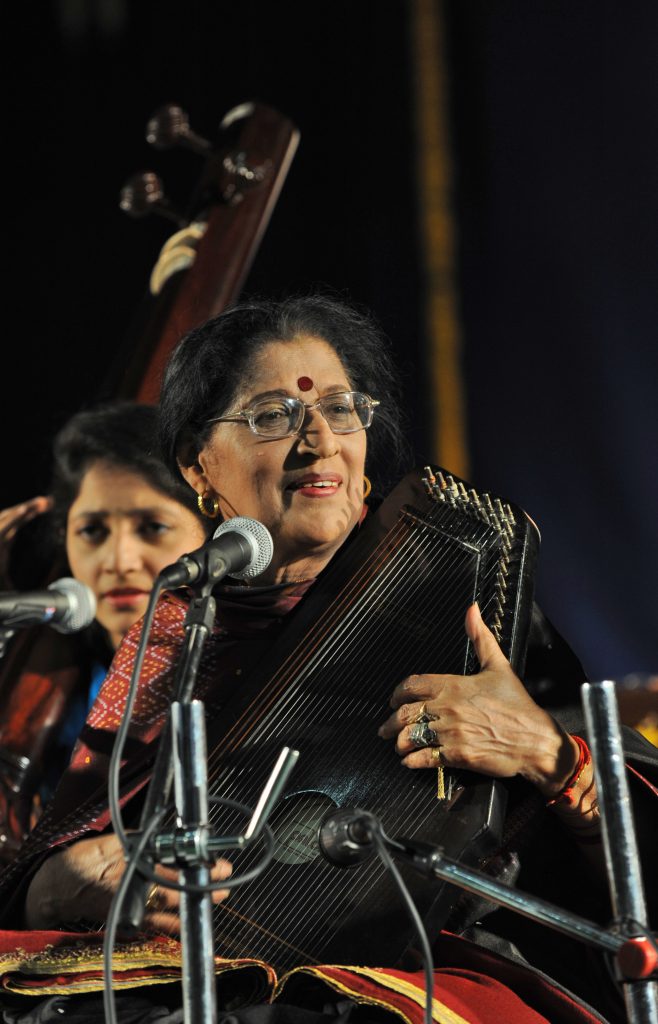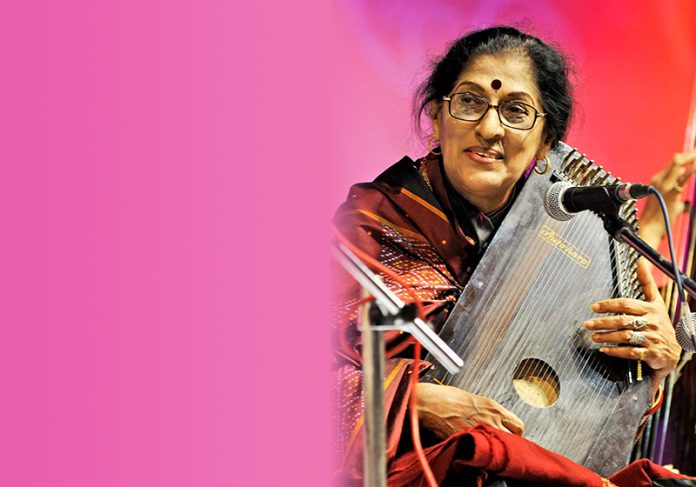I wrote for Seniors Today a couple of years ago a detailed account of Gaansaraswati Padmavibhushan Kishori Amonkar (hereafter called simply “Taai”) as my outstanding Guru in Jaipur Gharana of Hindustani classical vocal music. In this article I will attempt to write more about her own place in the history of Hindustani music, and about her personality and life based on my association with her for many decades. My memories of her inevitably will have a touch of “a by-gone era”.
Kishoritai’s spectacular musical career
I have best understood her music during the time period of 1955 to 2000. After this time, I was unable to follow her musical career closely since I moved to the US. Gaantapaswini Mogubai Kurdikar (Taai’s mother and Guru, hereafter called “Maai”) was quite a liberal Guru. She encouraged Taai to learn from various other Gurus so that she could acquire Raagas, Bandishes and other good features of other Gharanas. Late Mohanrao Palekar, Anjanibai Malpekar were Tai’s other Gurus. Also, Agra Gharana’s Anwar Hussein Khan Saheb taught her a couple of Raagas around 1963. Tai gave me an example of Khan Saheb’s generous spirit. He told her once, “Beti, you learn what I teach you, but when you present it in a concert, you must sing in your mother’s style.” Gurus like Maai and Anwar Hussein Khan Saheb were rare at that time when most Gurus did not have such a liberal attitude.
Let me dwell on some amazing aspects of Taai’s music. The foundation of her music was in her training with her mother. Late Alladiya Khan Saheb’s younger brother Haidar Khan Saheb must get much credit for bringing beauty and emotional appeal to Jaipur’s structured style. Maai had trained under Haidar Khan Saheb for many years which is why her music was aesthetically very appealing. Naturally, Taai inherited that legacy from Maai. She took this aesthetic brilliance to a much higher level. Her career can be divided into two time periods. From 1955-1980 and from 1980 to the end. In the first time period, her music was beautiful yet heavily leaning towards the strict discipline of Jaipur Gharana. Later her emphasis was on soulful exploration of notes and not so much on the rules and strict grammar of the Jaipur tradition. Jaipur Gharana was still the core of her music. For instance, she always used a clear Aakar. However, practices such as slight deviations from adhering to composition of Asthati- Antara, using words of the Bandish in the Aalapi (called Bol-Aalap), using straight, fast Taans with less emphasis on long Taans with convoluted Gamaks, using very slow rhythmic pace to explore the melodic content of the Raag, etc., were deviations from the traditional Jaipur Gharana discipline. Taai had a God-given gift of tonal accuracy. She further devoted herself to study microtones called Shrutis. She had ascertained “Swayambhoo” Gandhar so accurately, that any Raagas with Shuddha Gandhar in her voice would surely bring tears to listeners’ eyes. Yaman and Bhoop in her voice were always divine. Other notes had equally a magical impact. Rishabh, Dhaivat and Gandhar in Todi, Dhaivat in Bibhas, two Komal Gandhars and Komal Nishads with different Shrutis in Kausi Kanada are some examples. “One must surrender to notes”, she used to say. Raagas such as Bhoop, Jaunpuri, Bhimpalas, Shuddha Nat, Khem Kalyan have become immortal in her voice. Some very difficult and prosaic Jaipur Gharana Raags sounded magically poetic in Taai’s voice. Creating beautiful patters with just 3 main notes, Sa, Ga and Pa in Jait Kalyan is a very difficult task. With her unbelievable creativity and skill, her rendition of a Meend while just touching Teevra Ma and Dha in Jait Kalyan sounded divine. Another example is Maru Bihag. In my opinion this Raag can only be sung accurately in Jaipur Gharana. A lesser known fact of this Raag is that it is a combination of Raagas Maru and Bihag and shades of each Raag have to be shown seamlessly in singing it. Surashree Kesarbai Kerkar’s short 78 rpm recording of this Raag is an excellent example of it. Taai’s Maru Bihag likewise was also very unique. Unfortunately, in her entire career, she sang this Raag in public concerts just a couple of times.
Along with notes, she paid close attention to the words of the Bandish. She never followed her Guru’s Bandish teaching blindly. She made appropriate changes in the Bandish words to make better sense of the meaning of the Bandish. Various emotions intended in the words of Bandishes such as joy, devotion, romance, pain of separation (“Viraha”), etc. were depicted very expressively by caressing words and notes appropriate to the emotion (“Bhava”). She had complete mastery in the pronunciation of the words of the lyrics to express the intended emotions. In Raag Bihari, the Bandish “Ye Ho Neend Na Aayi” describes the pain felt by a separated lover. The urge in “Ab to Aao”, the yearning in the word “Sajile” were always heart rending in Taai’s Bihari. She always told me, “Notes are like delicate flowers in your hand. Handle them gently. Sing with the careful attention to the notes. Don’t just pay attention to the syntax and Taans. Consider poetry and beauty in the music.” I am infinitely indebted to her for giving me this insight and sensitivity to “Sur” in music.

Since there was only a 12-year difference between my age and Taai’s, apart from rigorous one-on-one training, we used to spend hours discussing nuances of Raagas, their specific Shrutis (microtones of main notes), aesthetic treatment of singing the Asthayi Aantaras, tandem relationship between Sur and Taal, and the special way in which pronunciation of the words had to be interlinked with the rhythm.
On occasion, Taai would deviate from the strict grammar of the Raag while she was deep in the exploration of notes. If I pointed out that deviation, she would graciously accept it, but would explain her thought behind making such deviations to enhance the aesthetic appeal of such phrases, so long as it did not depart radically from the grammar of the Raag. Her use of Pancham in ascent in Bageshree is objectionable to many. It is very difficult to present Shuddha Kalyan in its true form. Madhayam and Nishad in this Raag are not shown in Taans by most vocalists. She showed how they can be skillfully injected. Sometimes she even touched Ma and Ni in the Aaroha of Shuddh Kalyan, and made it especially delightful. Many traditionalists didn’t like such deviations, however. She refused to compromise aesthetics for the sake of grammatical rules. The extent of this freedom is debatable but that discussion is not appropriate here. The title “Ganasaraswati” given by Shankaracharya of Shringeri was more valuable to her than “Padmavibhushan” awarded by the Indian government. Even the title of “Swaradevata” would be insufficient for her because of the tonal accuracy of her voice of the highest degree. She used to be restless until the Taanpuras were set perfectly. She wasn’t bothered if that made the concert schedule run late. A few years ago, Taai asked me to show the World true form of Jaipur Gayaki. She asked me to conduct lecture demonstration of Jaipur Gharana. As per her wishes I presented a three hour long program in Pune University. I continued that programme in the US for several years.
After 1980, Kishoritai gave up the insistence of presenting all 8 elements of Indian Khayal music (“Ashtangas”). Adherence to “Ashtangas” was, in her opinion, restrictive to creativity. She even took a stance that Taan, as one of the most important of these Ashtangas, was also not necessary for the aesthetics of the Raag, and should take a secondary role. So she reduced singing the long, multi layered and undulating Taan patterns that are characteristic of Jaipur Gharana. I find myself fortunate to have learned Maai’s music while I was learning from Taai. At that time Taai’s music used to be a perfect balance of emotive beauty and Jaipur Gharana discipline. And I am happy to continue to sing in her older style.
Kishoritai used to sing Thumari, Abhang, Bhajan, and even Ghazals effortlessly. However, she didn’t sing Thumari much, and Natyasangeet was never, by choice, her cup of tea. She preferred devotional music such as Bhajans and Abhangs. She composed many of the light music songs herself. Her work with various other composers and musicians shows her versatility.
In summary, Kishoritai’s greatest contribution to Hindustani music, and particularly to Jaipur Gharana, is the emotive content she made to blossom in all her Raag presentations. To her, music always had to touch one’s heart, not just the brain!
Kishoritai’s spiritual journey through music
Kishoritai’s favorite passion was in the spiritual connection of music. She was a spiritual person since her young age. She was a dedicated devotee all her life of Shri Raghavedra Swami, and used to do a pilgrimage every year to his Ashram at Mantralayam in Andhra Pradesh. She believed music was for searching of the soul and for the attainment of a higher spiritual state, rather than for entertainment. In fact, her listeners must have experienced divine calm, or else how could their eyes well up listening to her recitals? She has written about her deep thoughts about music and spirituality in her book “Swarartharamani”. Also, her biography by late Mr. Datta Marulkar titled “Ganasaraswati” has considerable treatment of it.
My tutelage with Kishoritai
I learned from Tai when there were no MP3 recorders to record the lessons. When students started learning from the teacher, they really immersed themselves in the lives of their Gurus. It often transformed into a close bond, and students became part of the Guru’s household. Tai used to live at her Maai’s house at the time. The family had more than their fair share of hardships and sorrows. I helped them in any way I could. Tai always showed concern for my well-being as well. She cared for me when I was sick and she celebrated my successes in college. So much so, that she even insisted on proudly attending the IIT convocation at Powai in 1966 when I received the President of India Gold Medal for my first rank at the graduation amongst all branches of engineering. Many of her students experienced the same closeness with her. There is more on this part of my relationship with Taai as her disciple in an earlier article I have written for Seniors Today.

Kishoritai’s personality
Born on 10th April, 1931, and brought up by Maai after the untimely death of Taai’s father, Tai developed an amazing personality as she went through school and college years in Mumbai. A loving, caring heart like Taai’s is a rarity. She was proud of, and devoted to, Maai. She cared for her two sons, Nihar and Bibhas, with intense love. She had exceptional devotion to God and never missed her daily pooja. She was always modestly and simply dressed with minimum accessories. She was quite superstitious. (She wore the same red Sari for at all her concert till it was worn out). She felt a little diffident about her darker complexion and her prominent nose but had a sense of humour to laugh about it. Krishna’s Radha too was dark, she used to say. And she called herself a descendent of Shivaji because of her nose.

Taai was always true to commitments she made. She had a special loyalty to Maharashtra. To give an anecdote, at one time we went to Amritsar for a concert. The organisers refused to pay her the pre-determined remuneration unless she performed one more concert. We had to return to Mumbai for another concert for Maharashtra Day celebration. When she found out that the organisers in Amritsar were holding her money and were breaking the contract, she decided to leave without getting paid at all. She had given her word to Maharashtra Day and that was more important to her than to get paid by people who had broken her trust.
Keeping her calm and providing moral support to her was often my job. She was often very anxious and superstitious about her performance. She would pray backstage before each concert, and once she got on stage and surrendered herself to well-tuned Tanpura notes, the storm in her mind would calm down. Even if she looked in control and detached from the outside, many a time she was like a scared puppy inside her heart. Very few people got to see that. These few incidents show her strong principles and her softer and sensitive side.
I am not a writer. I am an engineer by early training, now Chairman Emeritus of Jacobs Engineering India, and also a devotee and student of the Jaipur Gharana. I have penned down my sincere, heartfelt thoughts written after a careful study of Kishoritai’s music and personality during my 45 years of a close association with her as a disciple and a confidant. Many have written about her music, her personality and her good and bad traits. I have tried to shed light on some of the lesser known aspects of her music and personality.
It seems her famous Bandish “Sahela re” is still calling. I am still in shock after she entered her heavenly abode, and it is difficult to accept that our beloved Kishoritai has left us. Ganasaraswati, who endlessly offered her worship to Goddess Saraswati through her music, has now merged into the Goddess herself! The flame has vanished, but the light will shine forever!








